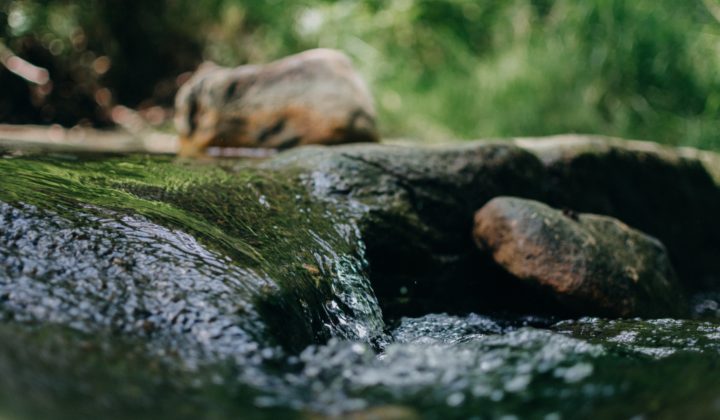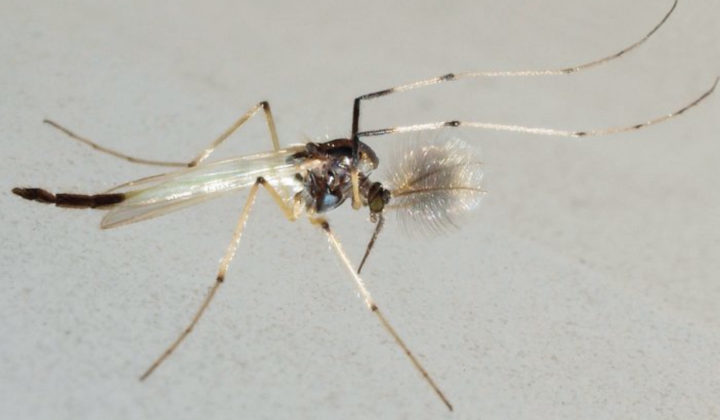River Ecosystem Management
Publications
Heß, S., Hof, D., Oetken, M. & Sundermann, A. (2024). Macroinvertebrate communities respond strongly but non-specifically to a toxicity gradient derived by effect-based methods. Environmental Pollution, 356, 124330.
Hörchner, S., Moulinec, A., Sundermann, A., Oehlmann, J. & Oetken, M. (2024). Under pressure: assessment of chemical stress on restored river sections using effect-based methods. Restor Ecol, e14206.
Sylvester, F., Weichert, F.G., Lozano, V.L., Groh, K.J., Bálint, M., Baumann, L., Bässler, C., Brack, W., Brandl, B., Curtius, J., Dierkes, P., Döll, P., Ebersberger, I., Fragkostefanakis, S., Helfrich, E.J.N., Hickler, T., Johann, S., Jourdan, J., Klimpel, S., Kminek, H., Liquin, F., Möllendorf, D., Mueller, T., Oehlmann, J., Ottermanns, R., Pauls, S.U., Piepenbring, M., Pfefferle, J., Schenk, G.J., Scheepens, J. F., Scheringer, M., Schiwy, S., Schlottmann, A., Schneider, F., Schulte, L.M., Schulze-Sylvester, M., Stelzer, E., Strobl, F., Sundermann, A., Tockner, K., Tröger, T., Vilcinskas, A., Völker, C., Winkelmann, R. & Hollert, H. (2023). Better integration of chemical pollution research will further our understanding of biodiversity loss. Nature Ecology & Evolution (2023), DOI: 10.1038/s41559-023-02117-6.
Brettschneider, D.J., Spring, T., Blumer, M., Welge, L., Dombrowski, A. Schulte‑Oehlmann, U., Sundermann, A., Oetken, M. & Oehlmann, J. (2023). Much effort, little success: causes for the low ecological efficacy of restoration measures in German surface waters. Environmental Science Europe 35, 31.
Heß, S., Hof, D., Oetken, M. & Sundermann, A. (2023). Effects of multiple stressors on benthic invertebrates using Water Framework Directive monitoring data. Science of the Total Environment, 878, 162952.
Nguyen, H.H., Venohr, M., Gericke, A., Sundermann, A., Welti, E.A.R. & Haase, P. (2023). Dynamics in impervious urban and non-urban areas and their effects on run-off, nutrient emissions, and macroinvertebrate communities. Landscape and Urban Planning 231, 104639.
Wessels, R. & Sundermann, A. (2022). Habitat requirements of riparian arthropods on gravel bars: Implications for conservation and management of braided river floodplains. PLoS ONE 17 (9): e0274977. https://doi.org/10.1371/journal.pone.0274977.
Sundermann, A., Müller, A. & Halle, M. (2022). A new index of a water temperature equivalent for summer respiration conditions of benthic invertebrates in rivers as a bio-indicator of global climate change. Limnologica, 95, 125980.
Pilotto, F., Haubrock, P. J., Sundermann, A., Lorenz, A.W., & Haase, P. (2022). Decline in niche specialization and trait β-diversity in benthic invertebrate communities of Central European low-mountain streams over 25 years. Science of the Total Environment, 810, 151770.
Rico-Sanchez, A.E., Rodriguez-Romero, A.J., Sedeno-Diaz, J.E., Lopez-Lopez, E. & Sundermann, A. (2022). Aquatic macroinvertebrate assemblages in rivers influenced by mining activities. Scientific Reports, 12 (1), 3209.
Haubrock, P.J., Cuthbert, R.N., Sundermann, A., Diagne, C., Golivets, M. & Courchamp, F. (2021). Economic costs of invasive species in Germany. NeoBiota 67: 225-246.
Babitsch, D., Berger, E., & Sundermann, A. (2021). Linking environmental with biological data: Low sampling frequencies of chemical pollutants and nutrients in rivers reduce the reliability of model results. Science of The Total Environment 772, 145498.
Rico-Sánchez, A.E., Sundermann, A., López-López, E., Torres-Olvera, M.J., Mueller, S.A., & Haubrock, P.J. (2020). Biological diversity in protected areas: Not yet known but already threatened. Global Ecology and Conservation, e01006.
Babitsch, D. & Sundermann, A. (2020). Chemical surveillance in freshwaters: small sample sizes underestimate true pollutant loads and fail to detect environmental quality standard exceedances. Environ Sci Eur 32, 3. doi:10.1186/s12302-019-0285-y
Haase, P., Pilotto, F., Li, F., Sundermann, A., Lorenz, A.W., Tonkin, J.D, & Stoll, S. (2019). Moderate warming over the past 25 years has already reorganized stream invertebrate communities. Stoten 658: 1531-1538.
Pilotto, F., Tonkin, J.D., Januschke, K., Lorenz, A.W., Jourdan, J., Sundermann, A., Hering, D., Stoll, S. & Haase, P. (2019). Diverging response patterns of terrestrial and aquatic species to hydromorphological restoration. Conservation Biology 33:132-141.
Jourdan, J., O’Hara, R.B., Bottarin, R., Huttunen, K.-L., Kuemmerlen, M., Monteith, D., Muotka, T., Ozoliņš, D., Paavola, R, Pilotto, F., Springe, G., Skuja, A., Sundermann, A., Tonkin, J.D. & Haase, P. (2018). Effects of changing climate on European stream invertebrate communities: A long-term data analysis. Science of the Total Environment 613-614: 1185-1195.
Berger, E., Haase, P., Schäfer, R.B., Sundermann, A. (2018). Towards stressor-specific macroinvertebrate indices: Which traits and taxonomic groups are associated with vulnerable and tolerant taxa? Science of the Total Environment 619–620: 144–154.
Bowler, D., Hof, C., Haase, P., Kröncke, I., Schweiger, O., Adrian, R., Baert, L, Bauer, H.-G., Blick, T., Brooker, R., Dekoninck, W., Domisch, S., Eckmann, R., Hendrickx, F., Hickler, T., Klotz, S., Kraberg, A., Kühn, I., Matesanz, S., Meschede, A., Neumann, H., O’Hara, B., Russell, D., Sell, A., Sonnewald, M., Stoll, S., Sundermann, A., Tackenberg, O., Türkay, M., Valladares, F., van Herk, K., van Klink, R., Vermeulen, R., Voigtländer, K., Wagner, R., Welk, E., Wiemers, M., Wiltshire, K. & Böhning-Gaese, K. (2018). Cross-realm assessment of climate change impacts on species’ abundance trends. Nature Ecology and Evolution 1: article 0067.
Lorenz, A.W., Haase, P., Januschke, K., Sundermann, A., Hering, D. (2018). Revisiting restored river reaches – assessing change of aquatic and riparian communities after five years. Science of the Total Environment 613 – 614: 1185 – 1195.
Berger, E., Haase, P., Kuemmerlen, M., Leps, M., Schäfer, R. & Sundermann, A. (2017). Water quality variables and pollution sources shaping stream macroinvertebrate communities. Science of the Total Environment, 587-588: 1-10.
Leps, M., Leisner, S., Haase, P. & Sundermann, A. (2016). Prediction of taxon occurrence: A test on taxon specific change point values of stream benthic invertebrates. Freshwater Biology 61(10): 1773–1786.
Li, F., Sundermann, A., Stoll, S. & Haase, P. (2016). A newly developed dispersal metric indicates the succession of benthic invertebrates in restored rivers. Science of the Total Environment 569-570: 1570-1578.
Leps, M., Sundermann, A., Tonkin, J.D., Lorenz, A.W. & Haase, P. (2016). Time is no healer: increasing restoration age does not lead to improved benthic invertebrate communities in restored river reaches. Science of the Total Environment 557: 722-732.
Berger, E., Haase, P., Oetken, M. & Sundermann, A. (2016). Field data reveal low critical chemical concentrations for river benthic invertebrates. Science of the Total Environment 544: 864-873.
Potouridis, T., Berger, E., Püttmann, W. (2016). Analysis of alkyl esters of p-hydroxybenzoic acid (parabens) in baby teethers via gas chromatography-quadrupole mass spectrometry (GC-qMS) using a stable isotope dilution assay (SIDA). Analytical Methods 8 (17): 3466-3474.
Tonkin, J.D., Heino, J., Sundermann, A., Haase, P. & Jähnig, S.C. (2016). Context dependency in biodiversity patterns of stream metacommunities. Freshwater Biology 61: 607–620.
Berger, E., Potouridis, T., Haeger, A., Puettmann, W., Wagner, M. (2015). Effect-directed identification of endocrine disruptors in plastic baby teethers. Journal of Applied Toxicology 35 (11): 1254-1261.
Simaika J.P., Stoll, S., Lorenz, A.W., Thomas, G., Sundermann, A. & Haase, P. (2015). Bundles of stream restoration measures and their effects on fish communities. Limnologica 55: 1-8.
Kuemmerlen M., Stoll, S., Sundermann, A. & Haase, P. (2015). Predicting stream macroinvertebrate distributions in the LTER-site Rhine-Main-Observatory: Long-term monitoring data meets high-resolution, catchment-based SDMs. Ecological Indicators. DOI:10.1016/j.ecolind.2015.08.008.
Leps, M., Tonkin, J.D., Dahm, V., Haase, P. & Sundermann, A. (2015). Disentangling environmental drivers of benthic invertebrate assemblages: the role of spatial scale and riverscape heterogeneity in a multiple stressor environment. Science of the Total Environment 536: 546–556.
Tonkin, J.D., Sundermann, A., Jähnig, S.C. & Haase, P. (2015). Environmental Controls on River Assemblages at the Regional Scale: An Application of the Elements of Metacommunity Structure Framework. PLoS ONE 10(8): e0135450.
Thomas, G., Lorenz, A.W., Sundermann, A., Haase, P., Peter, A. & Stoll, S. (2015). Fish response to river habitat restorations in Germany and Switzerland. Freshwater Science 34 (3): 975-990.
Sundermann, A., Leps, M., Leisner, S. & Haase, P. (2015). Taxon-specific physico-chemical change points for stream benthic invertebrates. Ecological Indicators 57: 314–323.
Jähnig, S.C., Shah, D.N., Tachamo Shah, R.D., Li, F.L., Cai, Q., Sundermann, A., Tonkin, J.D. & Stendera, S. (2015). Community-environment relationships of riverine invertebrate communities in central Chinese streams. Environmental Earth Sciences 74 (8): 6431-6442.
Tonkin, J.D., Stoll, S., Sundermann, A. & Haase, P. (2014). Dispersal distance and the pool of taxa, but not barriers, determine the colonisation of restored river reaches by benthic invertebrates. Freshwater Biology 59: 1843-1855.
Stoll, S., Kail, J., Lorenz, A.W., Sundermann, A. & Haase, P. (2014). The importance of the regional species pool, ecological species traits and local habitat conditions for the colonization of restored river reaches by fish. PLoS ONE 9 (1): e84741.
Lorenz, A.W., Stoll, S., Sundermann, A., Haase, P. (2013). Do adult and YOY fish benefit from river restoration measures? Ecological Engineering 61: 174-181.
Stoll, S., Sundermann, A., Lorenz, A. W., Kail, J. & Haase, P. (2013). Small and impoverished regional species pools constrain colonization of restored river reaches by fishes. Freshwater Biology 58: 664-674.
Sundermann, A., Gerhardt, M., Kappes, H & Haase, P. (2013). Stressor prioritization in riverine ecosystems: Benthic invertebrates assemblages are shaped by water quality rather than by local habitat structure. Ecological Indicators 27, 83-96.
Haase, P., Hering, D., Jähnig, S.C., Lorenz, A.W. & Sundermann, A. (2013). The impact of hydromorphological restoration on river ecological status: a comparison of fish, benthic invertebrates, and macrophytes. Hydrobiologia 704, 475 – 488.
Lorenz, A., Korte, T., Sundermann, A., Januschke, K. & Haase, P. (2012). Macrophytes respond to reach-scale river restorations. Journal of Applied Ecology 49: 202-212.
Jähnig, S., Lorenz, A., Hering, D., Antons, C., Sundermann, A., Jedicke, E. & Haase, P. (2011). River restoration success – a question of perception. Ecological Applications 21: 2007-2015.
Sundermann, A., Stoll, S. & Haase, P. (2011). River restoration success depends on the species pool of the immediate surroundings. Ecological Applications 21: 1962-1971.
Kappes, H., Sundermann, A. & Haase, P. (2011). Distant land use affects terrestrial and aquatic habitats of high naturalness. Biodiversity and Conservation 20: 2297-2309.
Sundermann, A., Antons, C., Cron, N., Lorenz, A., Hering, D. & Haase, P. (2011). Hydromorphological restoration of running waters: effects on benthic invertebrate assemblages. Freshwater Biology 56: 1689-1702.
Haase, P., Pauls, S.U., Schindehütte, K. & Sundermann, A. (2010). First audit of macro-invertebrate samples from an EU-Water Framework Directive monitoring programme. Journal of the North American Benthological Society 29: 1279-1291.
Kappes, H., Sundermann, A. & Haase, P. (2010). High spatial variability biases the space-for-time ap-proach in environmental monitoring. Ecological Indicators 10: 1202-1205.
Sundermann, A., Pauls, S.U., Clarke, R.T. & Haase, P. (2008). Within-stream variability of benthic invertebrate samples and EU Water Framework Directive assessment results. Fundam. Appl. Limnol. (Arch. Hydrobiol.), 173: 21–34.
Haase, P., Pauls, S. U., Engelhardt, C. H. M. & Sundermann, A. (2008). Effects of sampling microhabitats with low coverage within the STAR/AQEM macroinvertebrate sampling protocol on stream assessment. Limnologica, 38 (1): 14-22.
Sundermann, A., Lohse, S., Beck, L.A. & Haase, P. (2007). Key to the larval stages of aquatic true flies (Diptera), based on the operational taxa list for running waters in Germany. Annales de Limnologie, 43: 61-74.
Haase, P., Murray-Bligh, J., Lohse, S., Pauls, S.U., Sundermann, A., Gunn, R. & Clarke, R. (2006). Assessing the impact of errors in sorting and identifying macroinvertebrate samples. Hydrobiologia 566: 505-521.
Haase, P., Lohse, S., Pauls, S., Schindehütte, K., Sundermann, A., Rolauffs, P. & Hering, D. (2004). Assessing streams in Germany with benthic invertebrates: development of a practical standardised protocol for macroinvertebrate sampling and sorting. Limnologica 34: 349-365.
Haase, P., Pauls, S., Sundermann, A. & Zenker, A. (2004). Testing different sorting techniques in macroinvertebrate samples from running waters. Limnologica 34: 366-378.
Hering, D., Meier, C., Rawer-Jost, C., Feld, C.K., Biss, R., Zenker, A., Sundermann, A., Lohse, S. & Böhmer, J. (2004). Assessing streams in Germany with benthic invertebrates: selection of candidate metrics. Limnologica 34: 398-415.
Andere Publikationen / Further publications
Halle M., Müller A. & Sundermann A. (2020). Der KLIWA-IndexMZB – Ein biologischer Impact-Indikator des Klimawandels für Fließgewässer. KW – Korrespondenz Wasserwirtschaft 13, 477-489.
Oetken, M. & Sundermann, A. (2018). Strategien zur effektiven Renaturierung von Fließgewässern. KW – Korrespondenz Wasserwirtschaft 11, 142-147.
Sundermann, A. (2017). Taxaspezifische Schwellenwerte für benthische Invertebraten in Fließgewässern: Wie viel Chlorid verträgt eine Zönose im guten ökologischen Zustand? Korrespondenz Wasserwirtschaft, 9, 536-541.
Sundermann, A., Hering, D., Nohl, M., Lorenz, A. (2017). Strategien zur Erfolgskontrolle und zur Optimierung von Fließgewässer-Renaturierungsmaßnahmen. NUA-Seminarbericht, 13, 45-50.
Halle, M., Müller, A., Sundermann, A. (2016). Ableitung von Temperaturpräferenzen des Makrozoobenthos für die Entwicklung eines Verfahrens zur Indikation biozönotischer Wirkungen des Klimawandels in Fließgewässern. KLIWA Heft 20, ISBN 978-3-88251-389-9, Karlsruhe. http://www.kliwa.de/_download/KLIWAHeft20.pdf
Sundermann, A., Lorenz, A., Stoll, S. & Haase, P. (2010). Renaturierung von Fließgewässern – Hinweise auf dem Weg zum Erfolg. In: Lüderitz, V., Jüpner, R. & Dittrich, A. (Hrsg.) Beiträge zum Institutskolloquium „Auswirkungen von Eingriffen in Fließgewässern“. Magdeburger Wasserwirtschaftliche Hefte, Band 10, 135-141.
Lorenz, A., Antons, C., Korte, T., Paster, M., Sundermann, A. & Haase, P. (2009). Wie reagieren Fische und Makrophyten auf Renaturierungsmaßnahmen? DGL-Tagungsbericht, 2009: 471-475.
Heigl, E., Sundermann, A., Meyer, E.I. & Haase, P. (2008). Revitalisierung von Fließgewässern – Evaluation durchgeführter Maßnahmen am Beispiel der Nidda (Modul Makrozoobenthos). DGL-Tagungsbericht, 2007:384-387.
Sundermann, A. & Haase, P. (2007).Variabilität von Makrozoobenthosproben und Bewertungsergebnissen – Datenanalyse und Interpretation mit STARBUGS. DGL-Tagungsbericht, 2006: 373-377.
Sundermann, A. & Haase, P. (2006). Variabilität von Makrozoobenthosproben vor dem Hintergrund der Umsetzung der EU-WRRL. DGL-Tagungsbericht, 2005: 415-419.
Sundermann, A. & Haase, P. (2005). Assessment of streams with benthic invertebrates within the EU Water Framework Directive. Multifunctionality of Landscapes: 70.
Sundermann, A., Haase, P., Clarke, R., Pauls, S., Lohse, S., Gunn, R. & Sporka, F. (2005). Assessing the impact of sorting and identification errors of macroinvertebrate samples. Fourth Symposium for European Freshwater Science: 142.
Meier, C., Hering, D., Haase, P., Sundermann, A. & Böhmer, J. (2005). Die Bewertung von Fließgewässern mit dem Makrozoobenthos. Limnologie aktuell 11: 76-90.
Forschungsberichte / Research reports
Sundermann, A., Antons, C., Heigl, E., Hering, D., Jedicke, E., A. Lorenz & Haase, P. (2009): Evaluation von Fließgewässer-Revitalisierungsprojekten als Modell für ein bundesweites Verfahren zur Umsetzung effizienten Fließgewässerschutzes. Zuwendungsgeber und Kennzeichen: Deutsche Bundesstiftung Umwelt (FK 25032-33/2 ) sowie Hessisches Ministerium für Umwelt, ländlichen Raum und Verbraucherschutz (FK III 2-79i 02)
Haase, P. & Sundermann, A. (2009). Biologisches Monitoring Fließgewässer – Praxisorientierte Ansätze für eine biologische Qualitätssicherung. Zuwendungsgeber: LAWA. Kennzeichen: O 12.08
Haase, P., Heigl, E. & Sundermann, A. (2008). Qualitätssicherung von Makrozoobenthosaufnahmen in Thüringen – Untersuchungsjahr 2008. Zuwendungsgeber: Thüringische Landesanstalt für Umwelt und Geologie. Kennzeichen: 2008F000522/5300
Haase, P., Heigl, E. & Sundermann, A. (2008). Qualitätssicherung von Makrozoobenthosproben aus Bächen und Flüssen der Monitoring-Erhebung aus 2007. Zuwendungsgeber: Hessisches Landesamt für Umwelt und Geologie. Kennzeichen: 4500309388
Haase, P., Schindehütte, K., & Sundermann, A. (2007). Pilotprojekt zur Qualitätssicherung von Makrozoobenthosaufnahmen in Hessen. Auftraggeber: Hessisches Landesamt für Umwelt und Geologie. Förderkennzeichen: 4500225679.
Feld, C., Lorenz, A. & Sundermann, A. (2006). River Basin Management Tools: Training Courses in River Assessment. Zuwendungsgeber: Danube Regional Project.
Meier, C., Böhmer, J., Biss, R., Feld, C., Haase, P., Lorenz, A., Rawer-Jost, C., Rolauffs, P., Schindehütte, K., Schöll, F., Sundermann, A., Zenker, A. & Hering, D. (2006). Weiterentwicklung und Anpassung des nationalen Bewertungssystems für Makrozoobenthos an neue internationale Vorgaben. Zuwendungsgeber: UBA. Förderkennzeichen: 202 24 223. www.fliessgewaesserbewertung.de
Haase, P., Sundermann, A., Hering, D., Korte, T., Meier, C., Böhmer, J. & Zenker, A. (2005). Anwendung und Erprobung neu entwickelter Verfahren zur Fließgewässerbewertung (Makrozoobenthos). Zuwendungsgeber: LAWA. Förderkennzeichen: O 3.04. www.fliessgewaesserbewertung.de
Haase, P. & Sundermann, A. (2004). Standardisierung der Erfassungs- und Auswertungsmethoden von Makrozoobenthosuntersuchungen in Fließgewässern. Zuwendungsgeber: LAWA. Förderkennzeichen: O 4.02. www.fliessgewaesserbewertung.de
Haase, P., Sundermann, A., Feld, C., Hering, D., Lorenz, A., Meier, C., Böhmer, J., Rawer-Jost, C. & Zenker, A. (2004). Validation der Fließgewässertypologie Deutschlands, Ergänzung des Datenbestandes und Harmonisierung der Bewertungsansätze der verschiedenen Forschungsprojekte zum Makrozoobenthos zur Umsetzung der Europäischen Wasserrahmenrichtlinie (Modul Makrozoobenthos). Zuwendungsgeber: LAWA. Förderkennzeichen: O 3.02. www.fliessgewaesserbewertung.de
Haase, P., Pauls, S. & Sundermann, A. (2003). Probenahme und Bestimmung von Makrozoobenthosproben nach den vorläufigen nationalen Standard zur Umsetzung der EU-Wasserrahmenrichtlinie. – Zuwendungsgeber: Hessisches Landesamt für Umwelt und Geologie (HLUG). Förderkennzeichen: 2003/03619.



